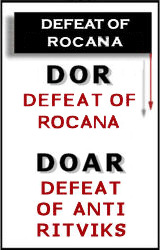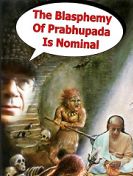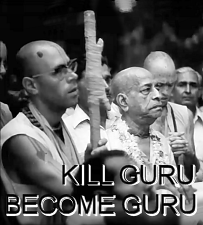Sadaputa Das, July 3, 1976, Washington, D.C.: […] So mathematics shows that chance alone would never begin to produce the things that go into life, because this, say, is just for one protein, but it’s estimated in the simplest cell that they experiment with that there are some three thousand proteins. This is what they estimate. And in a human, in a single cell of the human body, they estimate three hundred thousand, or even three million. It’s just an estimate. But it shows that chance is completely unrealistic. Now the scientists will say that both chance and natural laws somehow mysteriously go together in what they call natural selection to produce living structures. In the next slide, this is also a calculation, and it shows that that is not correct either, at least as far as the mathematics goes. What this says is suppose you look at the earth and you’re going to wait four point five billion years—that’s what they estimate is the age of the earth—and ask what is the chance of finding a given organized structure. And mathematically there’s a thing called information theory, and you can show that the chance of getting an organized structure with a high level of information goes down exponentially, so that for an amount of information higher than that of the laws that cause these things to move, the chance goes down practically to zero. Full Conversation
Prabhupada Quotes

Hare Kṛṣṇa Mantra with Prabhupāda
Audio Player
![]()
SUBMIT AN ARTICLE: info@prabhupadanugas.eu
PLEASE NOTE: Comments may be selected for inclusion into our listed blog posts.
Recent Comments
- Acsd on THE SYSTEM OF MANAGEMENT WILL CONTINUE AS IT IS NOW AND THERE IS NO NEED OF ANY CHANGE.
- Sudarsana Das Vanacari on THE SYSTEM OF MANAGEMENT WILL CONTINUE AS IT IS NOW AND THERE IS NO NEED OF ANY CHANGE.
- Acsd on THE SYSTEM OF MANAGEMENT WILL CONTINUE AS IT IS NOW AND THERE IS NO NEED OF ANY CHANGE.
- Sudarsana Das Vanacari on Myth: “On May 28 1977 Srila Prabhupada ordered regular guru successors after his departure”
- Dusyanta dasa on Myth: “On May 28 1977 Srila Prabhupada ordered regular guru successors after his departure”
- Acsd on Myth: “On May 28 1977 Srila Prabhupada ordered regular guru successors after his departure”
- Sudarsana Das Vanacari on Myth: “Srila Prabhupada appointed 11 ritviks only so new ritviks are bogus”
- Acsd on Myth: “On May 28 1977 Srila Prabhupada ordered regular guru successors after his departure”
- Acsd on Myth: “On May 28 1977 Srila Prabhupada ordered regular guru successors after his departure”
- Sudarsana Das Vanacari on Myth: “Srila Prabhupada appointed 11 ritviks only so new ritviks are bogus”
- Acsd on BHU-MANDAL
- mohini on Geoengineering – Weather Modification
- Acsd on Estate of Victory
- Acsd on Myth: “Srila Prabhupada appointed 11 ritviks only so new ritviks are bogus”
- mohini on Geoengineering – Weather Modification
- Acsd on Myth: “Srila Prabhupada appointed 11 ritviks only so new ritviks are bogus”
Links
- bhagavad-gita.de
- bhagavad-gitaasitis.com
- BIG Varnasrama Gurukula College
- billyandanuttama
- causelessmercy.com
- Gallery
- Gopal Farm US
- Hare Krishna Community Jaipur
- Hare Krishna Community Jaipur Blog
- Hare Krishna Mexico
- Hare Krishna Temple
- Hare Krishna Village
- International Hare Krishna Movement
- International Sri Krishna Mandir
- iskcon-dom.com
- iskcon-truth.com
- Isokrsna.com (Australia)
- justiceforsrilaprabhupadafoundation.org
- killgurubecomeguru.org
- krishna-books.com
- monk.farm
- Nav Vrindavan, Jammu Kashmir
- newnandagramcowprotection
- Prabhupada Books at prabhupadanugas.eu
- Prabhupada Lectures
- Prabhupada Lectures (download)
- prabhupada-books.de
- prabhupada.de
- Prabhupada's original books at prabhupada-media.net
- prabhupadabooks.com
- prabhupadaconnect.com
- prabhupadainitiation.blogspot.com
- Prabhupadanugas Hawaii
- prabhupadanugasworldwide.org
- prabhupadatruthcommission.org
- rtvik.org
- saragrahi.org
- stillinsound.com
- sulocana.de
- The Hare Krishna Movement.com
- The Hare Krishna Movement.org
- vedaveda.com
Archives
Copyright © 2025 ·Social Eyes Theme on Genesis Framework · WordPress · Log in






Speak Your Mind